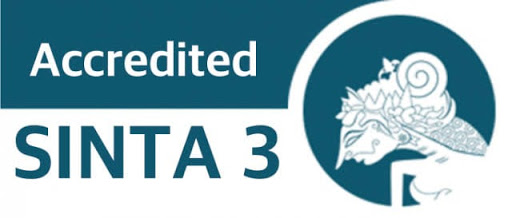ANALYZING THE SECOND YEAR STUDENTS’ DIFFICULTIES ON READING ANALYTICAL EXPOSITION TEXT AT SMA NEGERI 9 PEKANBARU
Abstract
This research was aimed to find out students’ difficulties of on understanding analytical exposition texts. This was descriptive quantitative research. The population of this research was the second-year students at SMA Negeri 9 Pekanbaru and one class at the second grade was chosen as the sample by using clustering-random-sampling. This research utilized a reading test and a questionnaire as the instruments. The results of this research revealed that students faced several difficulties to understand analytical exposition texts based on 8 indicators, namely finding the main idea, finding factual information, finding references and inferences, finding vocabulary, identifying the social function, identifying the generic structure, and identifying language features of the analytical exposition text. Moreover, it was found that students had difficulties in identifying the social function (56%) which was categorized as high, in identifying the generic structure (54%) which was categorized as medium, and in the language features of the text (54%) which was categorized as medium. Then, data from the questionnaire showed that students had problems in understanding the text, in reading interest, and the lack of material review. Thus, it was concluded that the second-year students at SMA Negeri 9 Pekanbaru had difficulties on reading analytical exposition text. It was recommended for the students to learn and practice more about analytical exposition text. Then, it was suggested for English teachers to give more detailed explanation and exercises about analytical exposition text.
Keywords
Full Text:
PDF (BAHASA INDONESIA)References
Arianti, G. & T. Y. (2014). Teaching Reading Analytical Exposition Text to Senior High School Students by Using POSSE (Predict, Organize, search, Summarize, Evaluate) Strategy. Journal of English Language Teaching, 3, 195-201.
Arikunto, S. (2006). Manajemen Penelitian. Jakarta: PT. Rineka Cipta.
Arikunto, S. (2013). Dasar-dasar Evaluasi Pendidikan. Jakarta: PT. Bumi Aksara.
Creswell, J. W. (2012). Educational Research: Planning, Conducting, and Evaluating Quantitative and Qualitative Research. (Vol.4). Pearson: Boston.
Daryanto, J. & R. E. P. D. (2012). I CAN DO IT : English for Senior High School Students Grade XI. Masmedia: Jawa Timur.
Gay, L. R. and P. A. (2000). Educational Research Competencies for Analysis and Aplication : sixth edition. New Jersey: Prentice Hall, Inc.
Jismulatif, S., and Fangiana. (2018). Exploring Personal Reading Histories in Developing Reading Interest of English Study Program Learners of University of Riau. 2(2), 206.
King & Stanley. (1989). Building Skill for the TOEFL. Thomas Nelson and Son Ltd.
Nunan, D., Bailey, K., Anderson, N., & Sokollik, M. (2003). Practical English language Teaching. In Language. The McGraw Hill Companiest. Inc. New York.
Sudarwati T. M. and G. E. (2007). Look Ahead Book 2. Jakarta: Erlangga.
Sudjono, A. (2011). Pengantar Statistik Pendidikan. Jakarta: PT. Raja Grafindo Persada.
DOI: http://dx.doi.org/10.33578/pjr.v5i4.8354
Refbacks
- There are currently no refbacks.
Copyright (c) 2021 JURNAL PAJAR (Pendidikan dan Pengajaran)

This work is licensed under a Creative Commons Attribution-NonCommercial-ShareAlike 4.0 International License.
JURNAL PAJAR (Pendidikan dan Pengajaran)
Secretariat
Program Studi Pendidikan Guru Sekolah Dasar
Gedung B1, FKIP Universitas Riau
Kampus Bina Widya Km. 12,5 Simpang Baru Panam
Pekanbaru Riau Indonesia 28293
e-mail : pajar@ejournal.unri.ac.id



